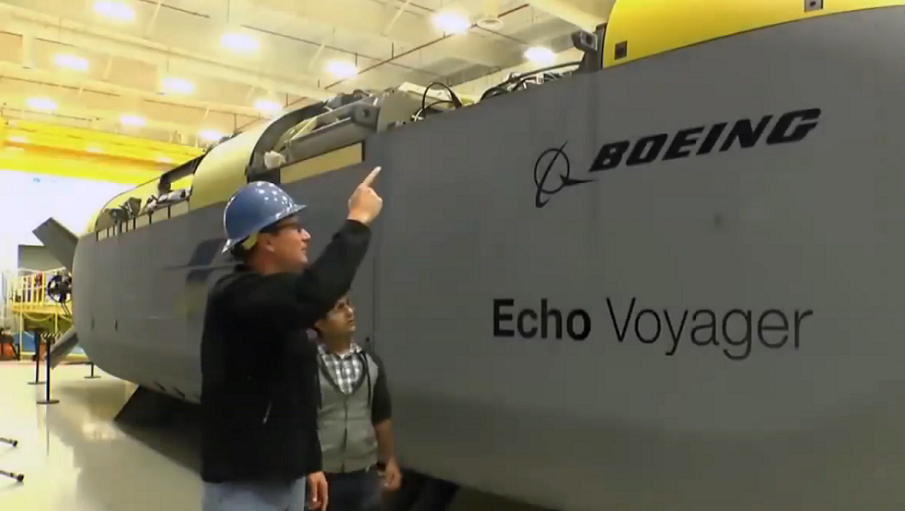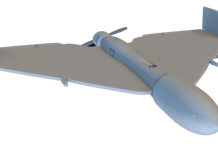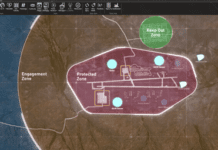This post is also available in:
 עברית (Hebrew)
עברית (Hebrew)
The U.S. Navy has been looking into the possibility of operating completely unmanned submarines through the mine-infested depths of the ocean to gather intelligence and fire weapons.
The military has already been using unmanned vehicles for missions considered too risky, boring, or expensive for human crews. While unmanned aerial vehicles have been popular in military use for the past several years, the Navy began increasing budgeting in unmanned ships and undersea drones to further compliment the Navy’s crewed vessels.
Recently, Boeing has been awarded a $274.4 million contract to build four Orca undersea drones that are expected to be delivered by 2022.
The size of the robot submarines remain classified, with neither Boeing nor the Navy disclosing specifics about the size, although Boeing has previously tested a 51 foot underwater drone prototype, dubbed the Echo Voyager.
Military.com mentions that the increase in funding towards unmanned underwater vehicles (UUV) means that the Navy is serious towards strengthening its unmanned fighting capabilities. This doesn’t come as much of a surprise. Unmanned submarines could operate and gather intelligence in the vicinity of underwater minefields, something that is just not worth the risk with a manned crew. Future missions may also possibly include deploying military gear and weapons into contested areas.
Although UUVs seem promising, there are still several technical challenges in developing UUVs. For starters, water is much thicker than air, thus making it harder to send communication transmissions from the operator to the submarine and back.
There are alternative methods of communication, such as acoustics, but in these cases the operator must be willing to trade off a slower data rate, shorter transmission distance, or both. Because of this, the UUVs will need a stronger sense of autonomy than their aerial counterparts. The UUV will need to be able to automatically handle changing weather conditions and avoid obstacles, it will also need to be able to autonomously resurface to gain access to GPS and to send faster transmissions.
Boeing has been working on these issues with its Echo Voyager.
The Echo Voyager has completed more than 2,500 hours of ocean testing since 2017. During its first phases of testing, the submarine operated for about three months while being monitored by a nearby chase boat.
The UUV runs on a hybrid electric battery/marine diesel engine. When the batteries run low, a generator kicks in and the submarine resurfaces in order to provide air to run the diesel engines, which recharge the batteries.
The Echo Voyager is currently in its second round of sea trials. Lessons learned from the Echo Voyager’s testing will be applied onto the Orca’s design. Boeing mentions that the two different UUVs will not be exactly the same.
This past year, the Navy managed to deploy a 132 foot unmanned ship from San Diego to Pearl Harbor and back, proving the feasibility of unmanned sea vehicles. While unmanned submarines are a much more difficult vehicle to master and perfect, it is very likely that the maritime wars of the future will be fought with these unmanned underwater vehicles.


























